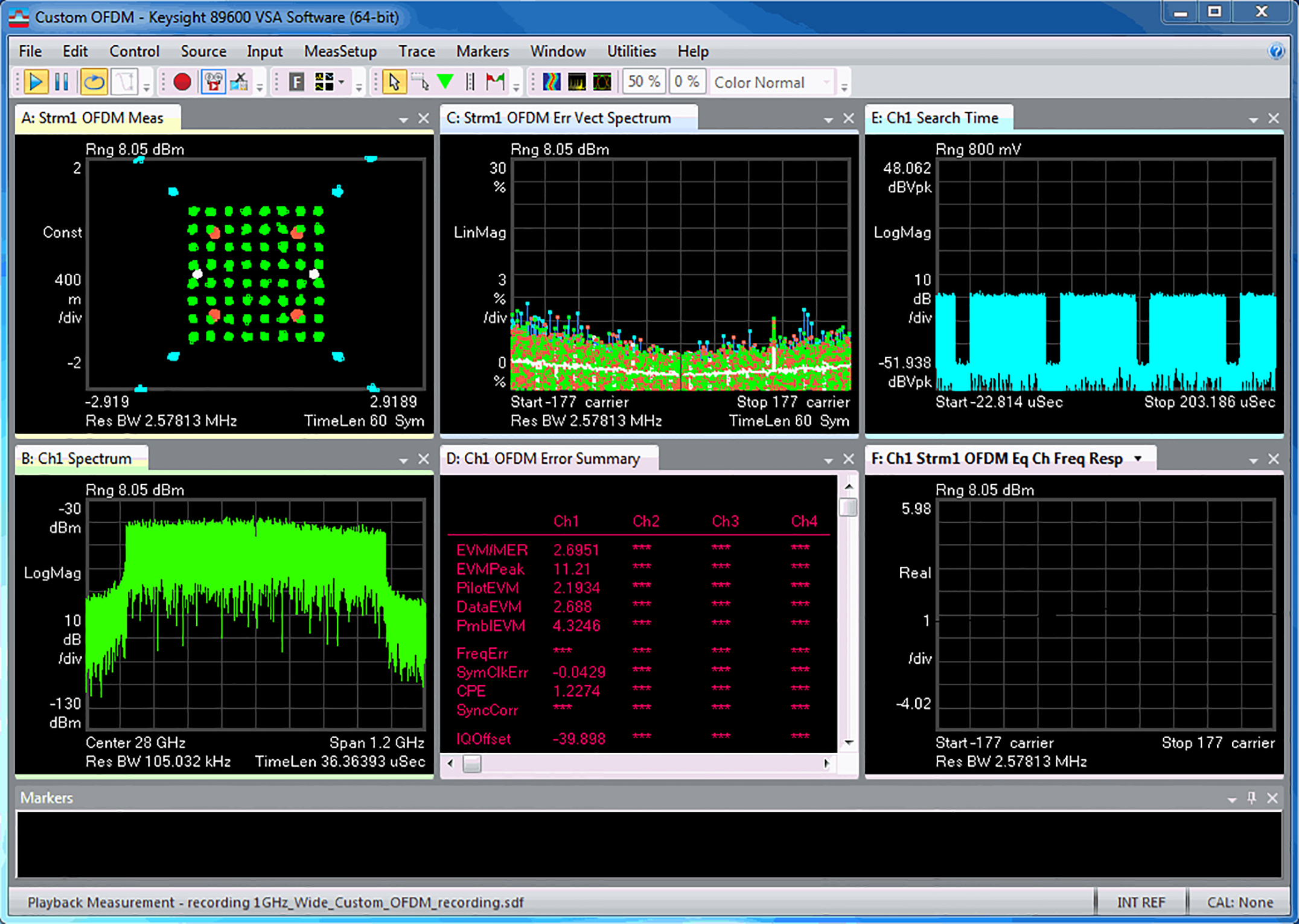Even as LTE and LTE-Advanced are being deployed, research and the standardization work is underway on 5th generation mobile networks addressing a broad range of use cases covering both human-centric and machine-type communication (MTC). Key attributes include having broadband access anytime and anywhere with peak data rates of up to 20 Gbps, massive MTC where architecturally simple devices that are low cost, low packet size transmission, as well as, mission-critical MTC requiring ultra-high reliability and ultra-low latency in the range of 1 ms.
Researchers are evaluating multiple air interfaces at microwave and millimeter frequencies that support these various and very different use cases – from simple MTC devices to immersive virtual-reality streaming.
Making the leap from predictions to practical implementation starts with the creation, generation and analysis of prototype signals. Because 5G standards are not yet established, physical-layer waveforms have not been defined and there is no consensus on potential waveforms. Candidates include waveforms at sub-6 GHz frequencies, and at microwave and millimeter-wave frequencies which may involve wide bandwidths of up to 2 GHz. The number and variety of waveforms, frequencies and bandwidths being researched introduce new test challenges for 5G signal generation and analysis. Evaluation of early concepts and potential 5G waveforms requires a flexible approach for analyzing a variety of modulation schemes at many different frequencies and modulation bandwidths.
Flexibility enables “what if?” analyses to be performed during evaluation of early concepts and potential 5G waveforms, using a variety of modulation schemes at many different frequencies and modulation bandwidths. The risk of potentially choosing the wrong path further reinforces the need for flexibility, especially in the form of signal-creation and signal-analysis tools that enable rapid changes in direction as strong candidates emerge in the evolution of 5G.
More specifically, flexibility is needed in three key areas of 5G research and early testing:
- – Generating and analyzing new waveforms
- – Supporting a wide range of modulation bandwidths, from several megahertz to a few gigahertz
- – Supporting a wide range of frequency bands, from RF to microwave to millimeter-wave
Solution
A flexible testbed provides flexibility through its software and hardware elements. Software is used to generate and analyze 5G candidate and custom waveforms – hardware provides the flexibility to support many frequency bands and modulation bandwidths. Combining the signal-creation software with two pieces of hardware—a precision arbitrary waveform generator (AWG) and a vector signal generator with wideband I/Q inputs—enables generation of wideband test signals with up to 2 GHz of modulation bandwidth at RF, microwave and millimeter frequencies. For signal demodulation and analysis, vector signal analyzer (VSA) software can be used inside a simulation software and can run on a signal analyzer with integrated wide analysis bandwidth, an oscilloscope or a PC controlling a variety of instruments or digitizers. Figure 1 shows a conceptual arrangement of the software and hardware elements.

Image courtesy of Keysight. Figure 1. Hardware plus software plus a skilled developer leads to new insights in 5G
Example: Wide-bandwidth signal generation and analysis at 28 GHz
28 GHz is one of the frequencies that is planned for initial 5G deployment. For this example, we are using a 1 GHz wide signal at 28 GHz frequency. A testbed reference solution base configuration, combining a precision AWG with a vector signal generator with wideband I/Q inputs, is used to produce a 1 GHz wide test signal at 28 GHz.
Signal creation software enables various 5G candidate waveforms such as FBMC, UFMC, GFDM, F-OFDM as well as custom OFDM and I/Q waveforms to be created, and for this example, FBMC signal is created as shown in figure 2.

Image courtesy of Keysight. Figure 2. Signal creation software to create wide-bandwidth 5G signal
The waveform is generated, then read into the AWG and played out using the AWG’s front panel software. The IQ outputs of the AWG are fed into the wideband IQ inputs on a vector signal generator, and a signal generator modulates the IQ waveforms on to a 28 GHz carrier frequency. The test signal from the signal generator’s RF output is analyzed using a high performance signal analyzer, with an integrated 1 GHz bandwidth, and a VSA software.
The resulting test signal measurement (figure 3) shows various measurements including constellation diagram and error summary of the transmitted signal.

Image courtesy of Keysight. Figure 3. Demodulation of 1 GHz wide 5G signal at 28 GHz
The development of 5G includes an aggressive set of characteristics that will be difficult to achieve. To help developers address the inherent challenges and quickly respond to changes in direction, testbeds need to include software and hardware elements that provide the flexibility needed to explore waveforms, algorithms and techniques.
Martha Zemede is 5G and IoT Outbound Lead for Keysight Technologies, Inc., a company that manufactures test and measurement equipment and software.




